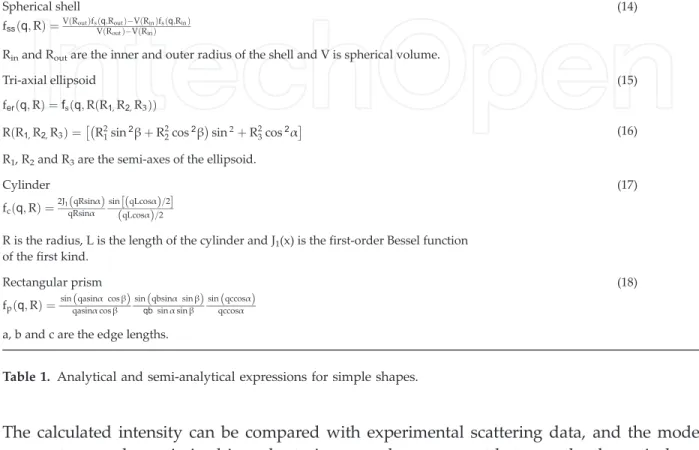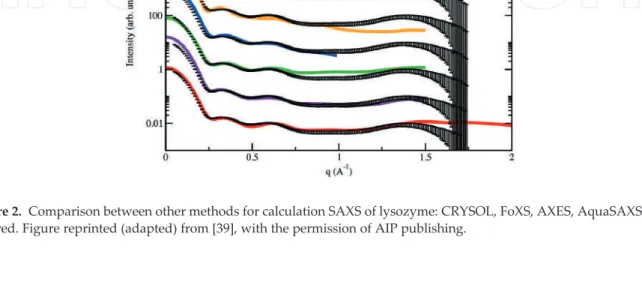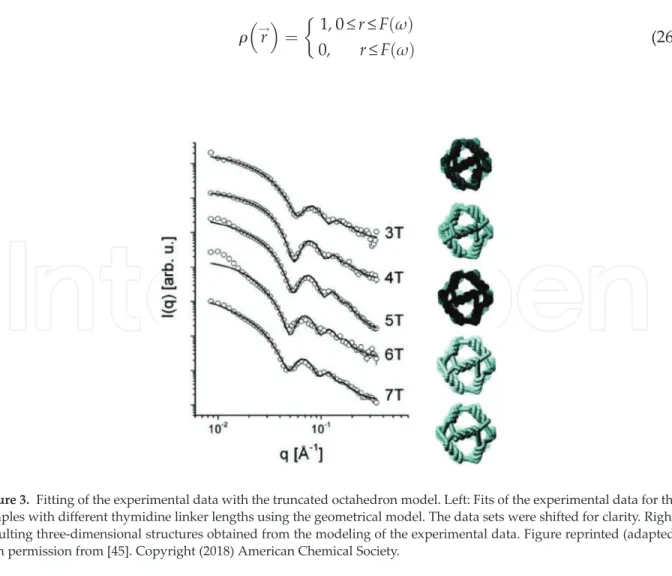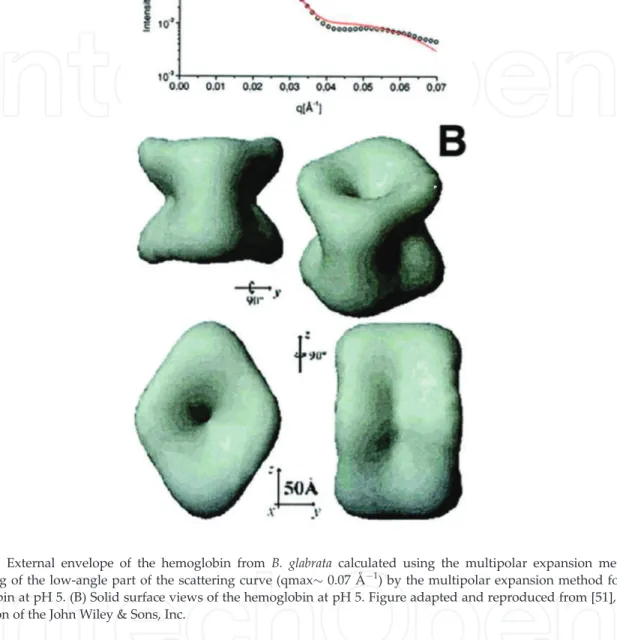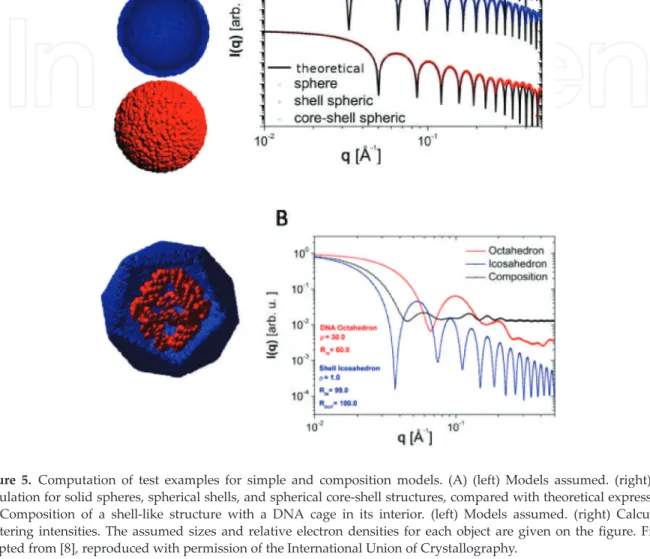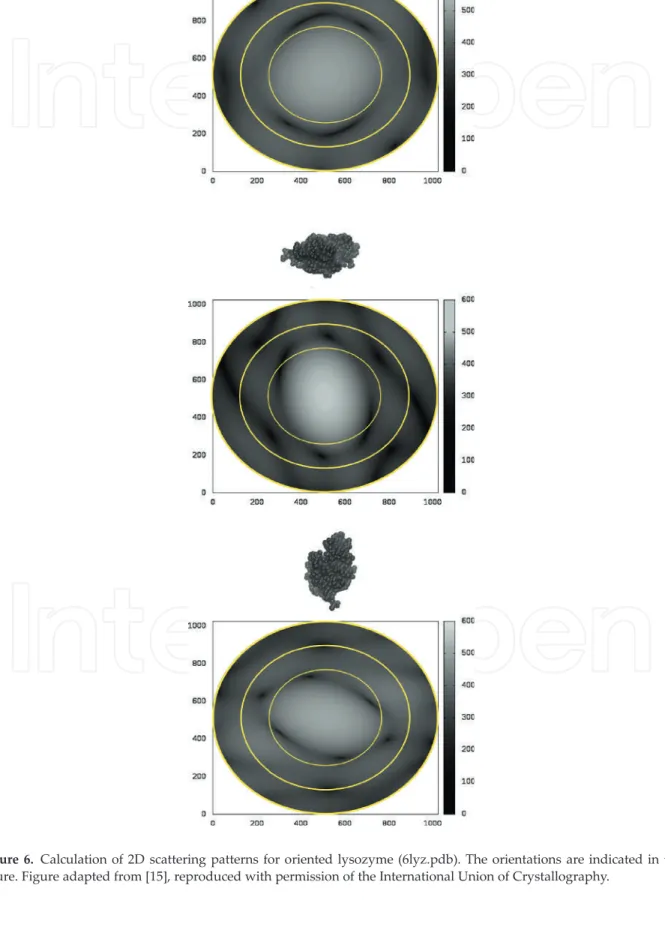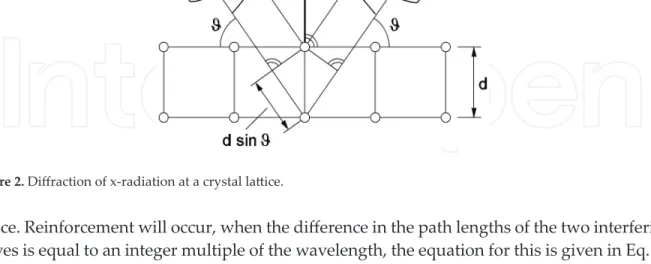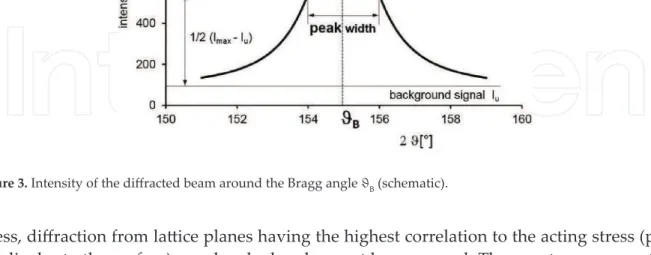The calculation and modeling of the scattering intensity can be carried out by using analytical/semi-analytical expressions or by using numerical methods. 4)), and the resulting scattering amplitude is the composition of the scattering amplitudes and its phase factors. The calculation of the scattering intensity is quite fast and can be performed with high precision.
The calculation of the scattering amplitude of a protein macromolecule with known atomic coordinates can be done with the equation. In 2014, Nguyen and collaborators presented another modification of the cube method [39], using the Reference Interaction Site Model (RISM) theory. This modeling method, also known as the finite element method (FE), allows the description of the particle shape through the use of small subunits.
Therefore, the precision of the method increases with the number of subunits used to represent the particle. The description of the particle shape using the envelope function Fð Þω was an important step for the calculation of the scattering of macromolecules in solution [41]. The use of spherical harmonics allows very fast computation of the scattering intensity and opens up new lines of research and possibilities for using SAS data.
The use of spherical harmonics speeds up the calculation process, which is the main drawback of the original Debye equation (Eq.
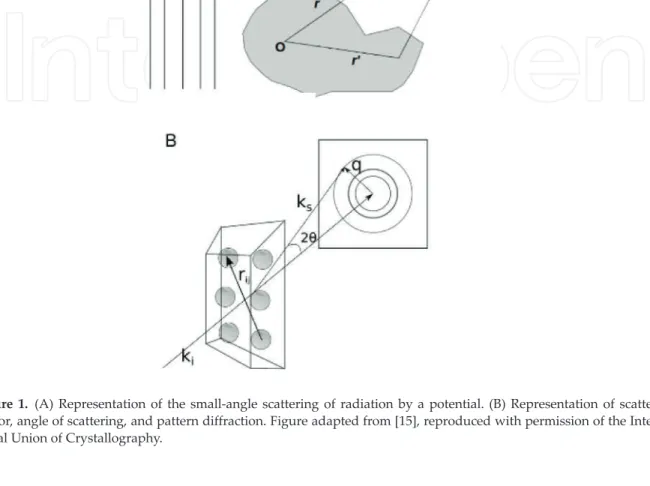
General conclusions and perspectives
Another modeling method was the use of spherical harmonics to calculate the scattering intensity. This innovative approach enables the rapid calculation of 2D scattering patterns and offers new perspectives for the application and analysis of the small-angle scattering method. Analysis of small-angle scattering data from colloids and polymer solutions: modeling and least-squares fitting.
Two-dimensional indirect Fourier transform for evaluation of small-angle scattering data for oriented samples. Interpretation of two-dimensional spatial functions obtained from small-angle scattering data for oriented microstructures. Comparative small-angle X-ray scattering studies of unacylated, acylated, and cross-linked Escherichia coli transfer RNA.
Report of the wwPDB Task Force on Small Angle Scattering: Data Requirements for Biomolecular Modeling and the PDB. Supercomputer simulation of small-angle X-ray scattering, electron micrographs, and X-ray diffraction patterns of macromolecular structures. Structure of immunostimulatory complex matrices and immunostimulatory complexes in suspension determined by small-angle X-ray scattering.
Small-angle scattering from collections of strongly interacting ellipsoids of revolution studied by Monte Carlo simulations and other methods of statistical thermodynamics.
TOP 1%
Ray Diffraction Analysis of Structural Changes Induced by Overrolling
Additional information is available at the end of the chapter http://dx.doi.org/10.5772/intechopen.74251. This chapter is distributed under the terms of the Creative Commons Attribution License (http://creativecommons.org/licenses/by/3.0), which permits unrestricted use, distribution, and reproduction in any media, provided the original work is properly cited.
Ray Diffraction Analysis of Structural Changes Induced by Overrolling
- Introduction
- X-ray residual stress analysis
- Principle of measurement
- Bragg’s law
- The ψ angle
- The sin 2 ψ chart
- Stresses due to rolling contact
- Analysis of bearing components
- Details of the performed analysis
- Bearing steel M50
- Experimental setup
- Evaluation results
- Field experience
- Conclusions
The distance d' of the atoms due to the tensile stress σ is greater than the distance d of the unloaded state. Lattice elongation in the stress direction σ is accompanied by shortening perpendicular to the σ direction. The ratio between the elongation in the direction of stress σ and the shortened vertical is called Poisson's ratio ν.
Shift of unit cell dimensions due to a tensile stress σ. d: lattice plane spacing without stress; and d′: lattice plane spacing due to the stress σ. The intensity of the diffracted beam around the Bragg angle ϑB is shown schematically in Figure 3. The X-ray penetration depth typically used for diffraction analysis is only a few micrometers in most metals.
Position-sensitive solid-state detectors are mainly used today to detect radiated X-rays. These detectors allow the analysis of the full diffraction beam around the Bragg angle. The direction of the normal and shear stress components measured by the ψ-variation is perpendicular to the axis of rotation for the p-angles.
These values can be determined by measuring the lattice plane distances dψ for three different ψ-angles. To reduce the uncertainty of the final values, the measurement of the plane distances dψ must be performed for more than three ψ-angles. The voltage is normalized to the Hertzian pressure p0, the distances are normalized to the smaller half of the contact ellipse b (a/b = 20). . voltage components) and is simpler in several applications (in the case of the principal voltage state).
The maximum pressure occurs in the center of the contact surface and is called Hertzian pressure. Stress distribution below the raceway surface (away from the contact axis) for a Hertzian contact (a/b = 20), stress parameters are normalized to the Hertzian pressure p0, the depth coordinate is normalized to the minor semi-axis b of the contact ellipse. Compressive residual stresses (in a certain area) typically result in a reduction of the equivalent stress level.
The stress parameters are normalized to the Hertz pressure p0, the depth coordinate is normalized to the radius of the contact surface. As can be seen, the evaluated endurance limit of the tumbled balls is significantly higher.

Acknowledgements
A comparison of the microstructure evaluation results of components taken from engine bearings after field use with the results of parts after machine testing shows that the underlying causes and effects are similar in both cases. These results therefore provide confirmation that device test results can be used for bearing design even in demanding applications.
Author details
